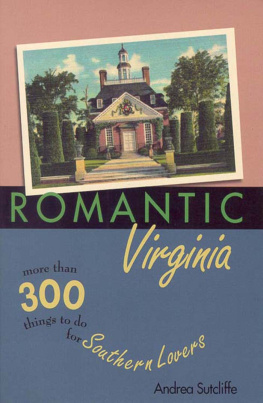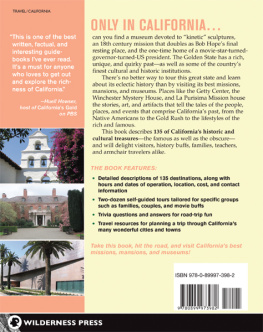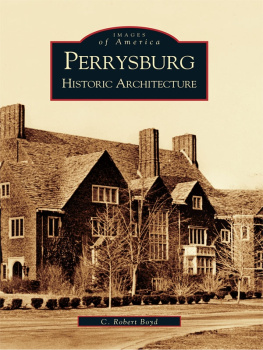Marvelous
Old Mansions
and other
Southern Treasures


Published by John F. Boair, Publisher
Copyright 2000 by Sylvia Higginbotham
All rights reserved under International and Pan American Copyright Conventions
All photos by Sylvia Higginbotham unless otherwise noted.
The paper in this book meets the guidelines for
permanance and furability of the
Committee on Production Guidelines for
Book Longevity of the Council on Literary Resources
Cover photographs clockwise from top left: Chretien Point Plantation, Louisiana; Richards D.A.R. House, Mobile, Alabama;
Stanton Hall, Natchez, Mississippi. Photograph used in the background on the front and back covers: The Telfair Mansion, Savannah, Georgia
Library of Congress Cataloging-in-Publication Data
Higginbotham, Sylvia.
Marvelous old mansions : and other southern treasures / by Sylvia Higginbotham.
p. cm.
Includes bibliographical references and index.
ISBN 0-89587-227-7 (alk. paper)
1. Architecture, DomesticSouthern StatesGuidebooks. 2. Architecture, ColonialSouthern StatesGuidebooks. 3. Greek revival (Architecture)Southern StatesGuidebooks. 4. Architecture, Modern19th centurySouthern States. I. Title.
NA7211 .H53 2000
728'.0975'09034dc21
00-044447
Design by Debra Long Hampton
Composition by The Roberts Group
Printed in Canada
To my husband, Weldon Joe Higginbotham, and our
daughters, Saxonie Eicholtz of Louisville, Kentucky,
and Shaye Erazo of Miami, Florida
Contents
In the eighteenth and nineteenth centuries, planters and merchants built marvelous old mansions across the South. These mansions served two purposes: to emphasize the social position of their owners by showing that they knew how to live well and could afford to do so, and to provide the utmost comfort for families and friends of these wealthy men.
This book focuses on some of the most interesting and/or historically significant homes built during those two centuries in nine Southern states. Because New Orleans and the East Coast already had well-established communities in the eighteenth century, some of the featured homes in these areas come from that century. However, the regions golden age of building came during the antebellum period, primarily between 1830 and 1860.
Greek Revival was the architectural style of preference from the mid-1830s until the outbreak of the Civil War in 1860. Due to the scarcity of architects in more remote areas, owners often planned their own homes. Building was done by those who lived on the property or by local carpenters, with itinerant craftsmen coming through on occasion to do the more detailed work. Often, it took many years to complete a home, even if the craftsmen stayed in residence until the building was completed.
The builders of these showplaces, who were filled with faith and hope, surely could not have conceived of the ways lifestyles in the South were about to change with the coming of the Civil War. The war wreaked havoc on or resulted in the destruction of many of the architectural treasures. After the war, the grand old homes of the South were sometimes considered a liability. There was a scarcity of able-bodied men who could still muster the strength or the money to keep up the homes, so condemned signs became a common sight in the 1860s.
The financial situation in the South improved in the 1870s and 1880s, and a new style in homes emerged. The old antebellum styles were ignored as the Victorian look with its frills and filigree came into fashion. Further blows came to Southern architecture with World War I and the Great Depression. During these tumultuous times, little attention was paid to the dilapidated houses that were often more than a hundred years old. As the century progressed, many of the mansions were torn down in the name of progressprogress being a parking lot or acres of concrete surrounding a mall.
When the nation began to struggle to its economic feet in the late 1930s, jobs were more plentiful, so American women longed for ways to enhance their feminine wiles and bring romance back into their lives. In 1939, as if on cue, Miss Scarlett OHara of Tara sashayed down the stairs at Twelve Oaks and into the heart of Rhett Butlerand into the hearts of millions of moviegoers. Gone With the Wind became an American movie classic and, in the process, did its part to change the way things were.
Suddenly, the women of America had a new hero in Rhett, a new heroine in Scarlett or Melaniesome chose the kind and mellow Melanie over the conniving and feisty Scarlettand a new interest in the old homes of the South. Some of these old homes were in their own neighborhoods, perhaps reeling and peeling from years of neglect. But interest was sparked, and once again the great houses of the South were back in vogue.
It took a few years for preservation to catch on, though it got a big boost when the Mount Vernon Ladies Association purchased and undertook the restoration of George Washingtons Mount Vernon. More organizations joined the preservation bandwagon, among them the Daughters of the American Revolution, the United Daughters of the Confederacy, and state chapters of various societies for the preservation of antiquities.
In the 1930s, historic properties were documented by the Historic American Building Survey (HABS). In 1949, the National Trust for Historic Preservation was chartered to provide leadership and to encourage public interest and participation in historic properties. In 1966, a new law authorized the establishment of the National Register of Historic Places within the Department of the Interior.
The National Register of Historic Places includes properties that embody the distinctive characteristics of a type, period, or method of construction, or that represent the work of a master, or that possess high artistic values, or that represent a significant and distinguishable entity whose components may lack individual distinction. We used this register extensively in our research and most of the homes included are on that register. Some are also on the prestigious National Historic Landmarks list.
Today, these historical homes have universal appeal, not only for those who enjoy the architecture but also for those who appreciate the art involved in creating the decorative molding and elaborate hand-carved woodwork. And of course, theres keen interest in the engineering ingenuity of these magnificent structures. It is amazing to know that the unsupported, spiraling wooden staircases still stand after all these years.
Hundreds of these marvelous old mansions are private residences and are not accessible to the public. Weve chosen to concentrate on the homes that can be seen, if not daily, at least during annual home tours, or pilgrimages, or by appointment.
Many of these treasures that are open to the public practice the art of Southern hospitality. The owners of these homes have a deep appreciation for the homes historical value and want to share it with others. We have included the homes that we believe are the most accessible and most hospitable and accommodating to the public.
When homes are located in towns or cities, we offer a brief overview of the community. Country homes stand alone.
In such places as Natchez that host annual pilgrimages or tours of historic homes, local mansions are open on a rotating basis during the event. If you happen to arrive on a day when the home you want to see is not on that days tour schedule, there will be plenty of others to see. If you have a strong preference for a particular home and cant stay a day or two until it rotates back on again, call in advance for a schedule. All pilgrimage events provide printed schedules of dates and times well in advance. Contact telephone numbers are listed in this book.
Next page









